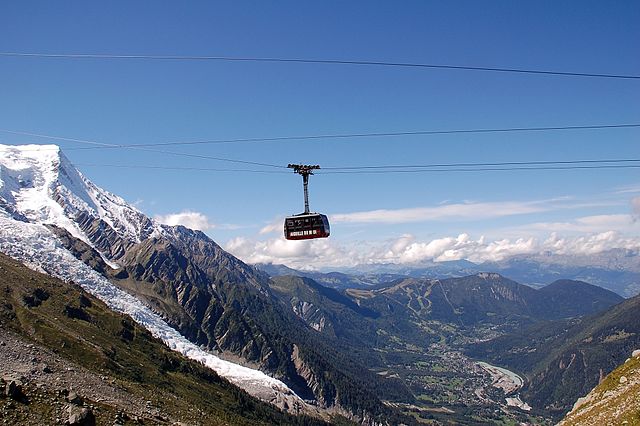An aerial lift, also known as a cable car or ropeway, is a means of cable transport in which cabins, cars, gondolas, or open chairs are hauled above the ground by means of one or more cables. Aerial lift systems are frequently employed in a mountainous territory where roads are relatively difficult to build and use, and have seen extensive use in mining. Aerial lift systems are relatively easy to move and have been used to cross rivers and ravines. In more recent times, the cost-effectiveness and flexibility of aerial lifts have seen an increase of gondola lift being integrated into urban public transport systems.
Plateau Rosa aerial tramway, in Cervinia, Italy, moves 120 people at a time to a 3,480 m (11,420 ft) glacier.
8-passenger gondola lift in Panticosa Ski Resort, Spain.
Cable car in Engadine, Switzerland, suspended on two support cables with an additional haul rope.
Cable Car to the Aiguille du Midi, France, suspended on one support cable with an additional haul rope.
Cable transport is a broad class of transport modes that have cables. They transport passengers and goods, often in vehicles called cable cars. The cable may be driven or passive, and items may be moved by pulling, sliding, sailing, or by drives within the object being moved on cableways. The use of pulleys and balancing of loads moving up and down are common elements of cable transport. They are often used in mountainous areas where cable haulage can overcome large differences in elevation.
Cable car at Zell am See in the Austrian Alps
The Portland Aerial Tram
An aerial tramway used in mining, at the Shenandoah-Dives Mill in Silverton, Colorado
A gravity incline in use in 1955 at Llechwedd quarry in Wales. Empty wagons are arriving at the top of the incline – the winding drum is in the shed in the background








